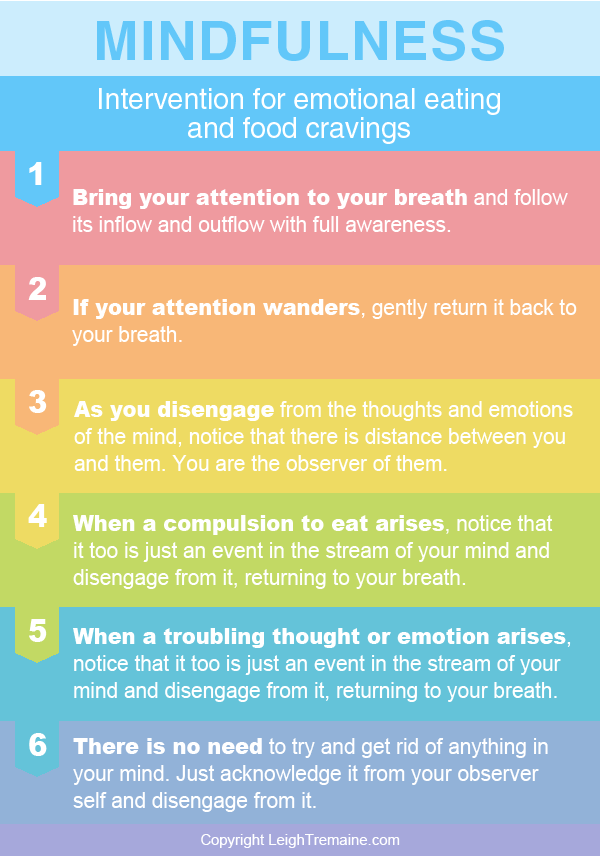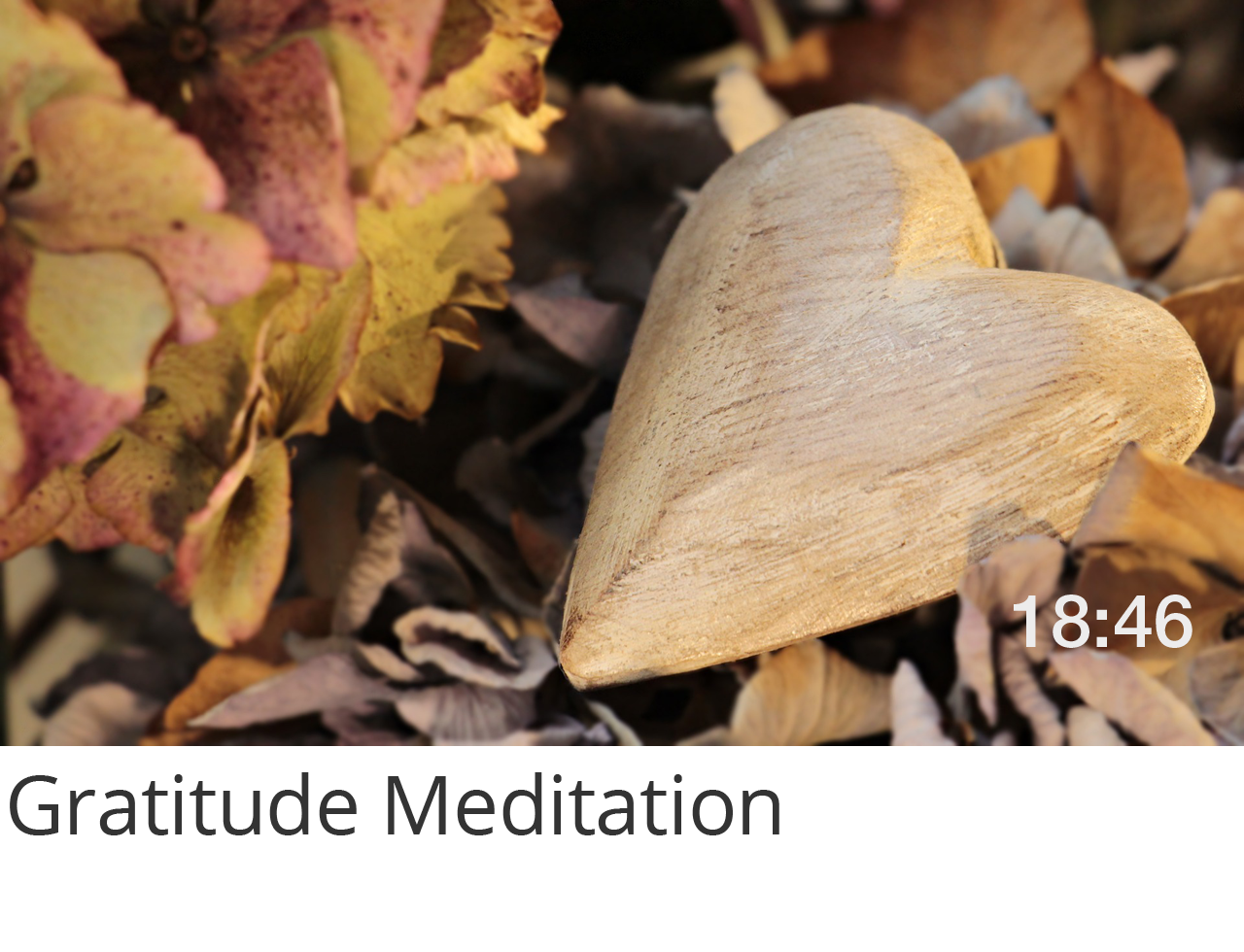Comfort eating or emotional eating is the automatic compulsion or craving to eat in order to relieve stress, emotional difficulties, emptiness, and boredom. This is a maladaptive, avoidant strategy and is often unconsciously driven. Many people try to stop comfort eating by forcing themselves to do so: for example by depriving themselves of the foods and snacks they crave by trying to stick to a diet they don’t really like. This is a poor strategy and is likely to fail for all but the most determined because it’s not addressing the psychological behaviour behind comfort eating or its root cause. In this post I’ll share how to stop emotional eating with a simple but powerful mindfulness technique. But first some important background.
The Problem with Comfort Eating
The problem with comfort eating is that it’s a compulsive, often unconscious behaviour that leads to undesirable weight gain, sluggishness, and eventually physical illnesses such as heart disease, diabetes, and even cancer. According to The Health Survey for England 2019, 28% of adults in England are obese and a further 36% are overweight, meaning 64% are obese or overweight. In the United States, according to the Center for Health Statistics at the CDC, 42.5% of adults are obese and 73.6% are overweight. Obesity is now a global epidemic, having tripled since the 1970s, in line with the rise of the junk food industry, and is the leading preventable cause of death.
Comfort eating often goes against our wiser intentions for weight loss, good health, and fitness, especially when we’re tempted by comfort food that we know is bad for us and has no nutritional value. We then feel guilty for our emotional eating in our moment of weakness and might look in the mirror with disgust at our own image. In order to relieve the resulting feelings, we may then crave food again to try and find comfort in eating, creating a vicious cycle.
What Causes Comfort Eating?
The underlying cause of comfort eating is a reaction of avoidance to negative thoughts and emotions, coupled with an addiction to the sugar and artificial flavours added to comfort food to try and make it palatable. If you’ve ever gone through an emotional trauma, or a period of stress, loneliness, or depression, and try to avoid your emotional distress, you may have turned to comfort eating as a maladaptive coping mechanism to escape your unprocessed emotions and unresolved issues and lift yourself up.
This is not surprising as eating food is a basic survival behaviour that we link to being nurtured, but the problem is that comfort eating can be harmful the more unconscious and reactive it becomes. It also causes us to continue to avoid the emotional distress that triggers the comfort eating, which only exacerbates our stress. Nevertheless, we often continue in the habit because of our addiction to the sugar and other ingredients that are deliberately added to junk food to make it more appealing and addictive. This is not helped if junk food is falsely associated with a good life. Over time, our self-regulatory control becomes impaired.
The number one cause of comfort eating is emotional avoidance and suppression, due to maladaptive responses to stress and unresourceful psychology. But here is a complete list of causes:
- Automatic reactions to unregulated emotional distress.
- Automatic reactions to food cues (such as the sight of a cake or snack).
- Automatic reactions to food cravings (such as eating the cake or snack).
- Addiction to added sugar and artificial flavourings.
- Unquestioned assumptions about the value of the food.
- Weakened self-regulation of behaviour.
How to Stop Comfort Eating
As comfort eating won’t help with wellbeing and will actually increase the risk for mortality, it’s crucial to stop emotional eating by using a mindfulness strategy, targetted to emotional eating, in place of forced dieting to break the pattern of comfort eating. Once this is done, it won’t be a struggle to stop overeating and there will be no going up and down like a yoyo.
How Does Mindfulness Help with Comfort Eating?
Mindfulness, the practice of coming back to the observer self and consciously directing attention from there, is crucial for stopping comfort eating. With mindfulness, we can learn to become fully conscious of what we’re experiencing and the choices we didn’t realise we had. By using mindfulness to enter a metacognitive state in which we are outside of our mind’s contents, we create distance from the thoughts, emotions, and impulses that previously controlled us through emotional eating, and see them as just passing events in the stream of the mind. By stepping back in this way, we disentangle ourselves from our food cravings and the difficult thoughts and emotions behind them and become less reactive to them and therefore less controlled by them. Mindfulness also helps us to become less reactive to external food cues (such as the cake or snacks we might pass in a store), and it improves self-control and self-regulation when practised over a period of time.
All this may sound too simple to be true, but scientific studies show it to be repeatedly the case for comfort eating and food cravings as well as for cases of stress, anxiety, and despression. For example, a study (Hendrickson and Rasmussen, 2017) showed that a 50-minute mindful eating training could affect eating choices compared with control groups. Participants in the mindful eating group showed less impulsive choices for food, compared to the control groups, despite all groups having access to the same types of foods.
A Mindfulness Technique to Stop Comfort Eating
The mindfulness technique used to stop comfort eating is simple but powerful. But for best results it must be practised daily. Practise it at any time, when you are being exposed to comfort eating triggers, and when you are not.
- Bring your attention to your breath and follow its inflow and outflow for the full duration with your awareness.
- If your mind wanders, notice this and gently bring your attention back to your breath.
- As you disengage from the thoughts, emotions, and impulses of the mind, notice that there is distance between you and them: you are the observer of them.
- When a troubling thought or emotion arises, or a compulsion to eat, notice that it too is an event in your mind and disengage from it, returning your attention to your breath.
- There is no need to get rid of anything in your mind. Just acknowledge it from your observer self and disengage from it.
Over time, as you become more mindful through repeating this practice, you will learn to distinguish the difference between natural hunger and the compulsion to eat, and will be able to eat when you are hungry rather than when a reactive urge is controlling you.
Adopt Healthy Food Choices with Mindfulness
By applying mindfulness to comfort eating, we can become more conscious of the foods we’re craving by directing our attention fully onto them as if for the first time, and separating them from the internal projections we’ve placed upon them. This gives us a true perception of them. The assumption that comfort food tastes great and is good to eat can be immediately challenged as a cognitive distortion and disproven by slowly and mindfully eating the comfort food, noticing for the first time how bland and lifeless it actually is beneath the sweeteners, artificial flavourings, and colourings. By eating mindfully and chewing for long enough to release any flavours, we can engage our senses with full awareness. Try it and see if you find this to be true. The fact is, the actual substance of most comfort food is cheap, stodgy, non-nutritious ingredients that can make us sick and may actually be toxic—which is why it’s called junk food. For example, science has shown that eating deep fried chips or a high-fat cake or ice cream in just one sitting will cause damage to the arteries in the form of endothelium dysfunction.
Gain Conscious Control of Your Automatic Eating Habits
You can apply mindful attention to the automatic reactions behind emotional eating and thereby interrupt and regulate the impulse to eat unhealthily. To do this, you enter a mindful state as observer and, from a distance, bring your attention to the thoughts, emotions, and behaviour that previously caused you to reach out for comfort food. There are two aspects to this mindful intervention:
- Become conscious of the automatic impulses and let them go. Do I actually need to eat right now or am I automatically responding to a craving or food cue? Is it actually healthy to eat this comfort food right now? Is it as nutritious and delicious as I assume? Do I have choice to break free from the addictive, vicious cycle of comfort eating? Am I willing to value myself by doing so? Can I see that these thoughts and cravings are just passing thoughts and impulses?
- Experience emotions without resistance. Do I need to distract myself from my emotional distress, emptiness, or boredom by turning to comfort food, or can I step back from them, experience them without resistance, and find a way to regulate them? How can I change my perspective of the situation that gives rise to emotional distress?
Do you see that from your observer self you are in a place of power? The more the observer self is strengthened through the practice of mindfulness, the stronger this place of power will be. You don’t necessarily have to use the reappraisal questions presented above: you could just rest in your centre and the reaction will fade because you have disengaged from it.
In summary, mindfulness is the best technique for bringing our attention under our control to interrupt unhealthy automatic behaviour like emotional eating. It does this by putting us in a metacognitive state, which is our place of power from which we can disentangle ourselves from the contents of our mind; it also allows us to consciously regulate our attention and our emotions.
Enter the Most Powerful Inner State to Create Wellness
Interestingly, mindfulness, by connecting us to our observer self, can also return us to a state of being rather than doing, which is extraordinarily healing when pursued as part of our mind-body-spirit wellness. How does this relate to comfort eating? Consider how a life that has spiritual emptiness in it will lead to maladaptive life choices that sooner or later create emotional distress, and how we may then try to deal with this with coping mechanisms such as emotional eating or other addictions. It’s not surprising that addictions, eating disorders, and obesity have increased as the spiritual foundations of society have been chipped away more and more. By recovering our spiritual being, we can reorganise our lives upon more nurturing and meaningful foundations and create new opportunities for mind-body-spirit wellness that are more likely to put an end to emotional eating.
Next Step: if you struggle with comfort eating or food cravings and would like to understand the cause and how to free yourself with my mindfulness strategy for emotional eating, book a Guidance Call with me and make a commitment to your wellness.

References
Hendrickson, K. L., & Rasmussen, E. B. (2017). Mindful eating reduces impulsive food choice in adolescents and adults. Health psychology : official journal of the Division of Health Psychology, American Psychological Association, 36(3), 226–235. https://doi.org/10.1037/hea0000440








Excellent understanding of the difficulties expressed by emotional eating in all its aspects and offering a holistic approach that is very healing and lasting.
Thank you!